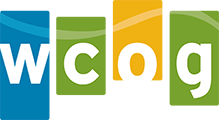2. Whatcom’s Regionally Significant System
The scope and perspective of regional transportation planning is different than that conducted by local governments, the state, tribes, transit providers, and other entities. This section of Way to Go, Whatcom 2045 describes the Regionally Significant (transportation) System (RSS), including existing and future facilities, services, and programs that are of common interest and impact in the Whatcom region. Implicit in the presentation of these components as a system is the importance of optimizing connections between these components and continuously improving multimodal and intermodal transportation for people and freight.
2.1. Facilities and related services
The RSS includes both publicly and privately-owned and operated components, including roads, portions of roads, and other dedicated facilities for bicycle and pedestrian travel, railroads, marine terminals, transit stations, and airports. Physical assets such as border inspection stations, parking lots, and electric vehicle charging stations are also included in the RSS.
2.1.1. Roads
- Roads classified as principal or minor arterials per the Federal Highway Administration functional classification system
- All state roads
- Roads serving intermodal facilities, including:
- Amtrak stations
- airports
- ferry terminals
- intercity bus terminals
- multipurpose passenger facilities
- port terminals
- public transit stations
- truck/pipeline terminals
- truck/rail facilities
- Roads serving major activity centers including:
- regional hospitals
- schools
- emergency management centers
- shopping centers
- industrial centers
- employment centers
- recreation and tourism centers
- Washington State Freight and Goods Transportation System (FGTS) routes T-1 through T-4
- Roads that support facilities generating or attracting significant freight-truck shipments and/or deliveries (Note: Most routes between concentrations of freight trip-ends are served by roads included in the RSS by virtue of the criteria listed above. This criterion allows inclusion of some roads that do not meet the other criteria, but because of the type and/or volume of traffic they serve, they advance regional transportation goals.)
2.1.2. Bicycle & pedestrian (Active transportation)
- Active transportation routes and facilities (trails, etc.), existing and proposed, serving regional connections (connecting urban centers) :
- Columbia Valley / Kendall Trail
- The Bay-to-Baker Trail
- The Coast Millennium Trail
- The Nooksack Loop
- Regional sections of the U.S. Bicycle Route System
- Active transportation routes and facilities that serve RSS multimodal connections:
- Park & ride/transit hubs
- bike-sharing stations co-located with a transit facility
- Bike share services
2.1.3. Parking
- Publicly owned parking for private vehicles (no-charge and priced), including:
- On-street parking
- Publicly owned parking lots and structures
- Passenger vehicle parking facilities located at:
- Employment centers
- Institutional uses (schools, hospitals, etc.)
- Retail and service providers
- Intermodal (rail, ferry, transit, park-and-rides, etc.)
- Park and rides
- Truck parking facilities (public and private facilities where large freight trucks can park for legally required driver rest)
- Privately owned public parking garages
- Facilities for secure parking of bikes and other wheeled mobility devices
2.1.4. Rail
- Railroads (right-of-way, tracks, and related facilities)
- Passenger rail stations
- Passenger rail service (Amtrak Cascades)
- Freight-rail carrier services (e.g., BNSF, CN)
2.1.5. Marine
- Alaska Marine Highway System
- Public ferry boats and auto and passenger ferry terminals
- Marine cargo and passenger terminals and services
- U.S. Maritime Administration (MARAD) Marine Highway System route
2.1.6. Transit
- Public transit routes, built amenities (pullouts, shelters, etc.), services from:
- Whatcom Transportation Authority (WTA) and its partners for fixed-route, paratransit, on-demand, and inter-county routes
- Lummi Transit
- Private scheduled-route operators (Greyhound, Flix, Bellair Airporter, Quik, etc.)
- Bus stations (WTA, Port of Bellingham, and private scheduled-route operators)
- Bus maintenance facilities
2.1.7. Air
- Bellingham International Airport
- Lynden Airport
- Passenger airlines (Alaska, Allegiant, Horizon, San Juan, Southwest, others)
- Air freight carriers (Alaska Air Cargo, FedEx)
2.1.8. Other facilities
- Intermodal
- U.S. and Canadian federal border inspection stations
- Electric vehicle charging stations, fuel stations, other vehicle-service centers
- School district bus storage and maintenance facilities
2.2. Other services
- School district bus transportation
- Ride services (taxis, Lyft, Uber, etc.)
- Car share services (e.g., ZipCar, peer-to-peer, etc.)
- Vehicle rental
- Shared mobility (bikes, scooters, etc
